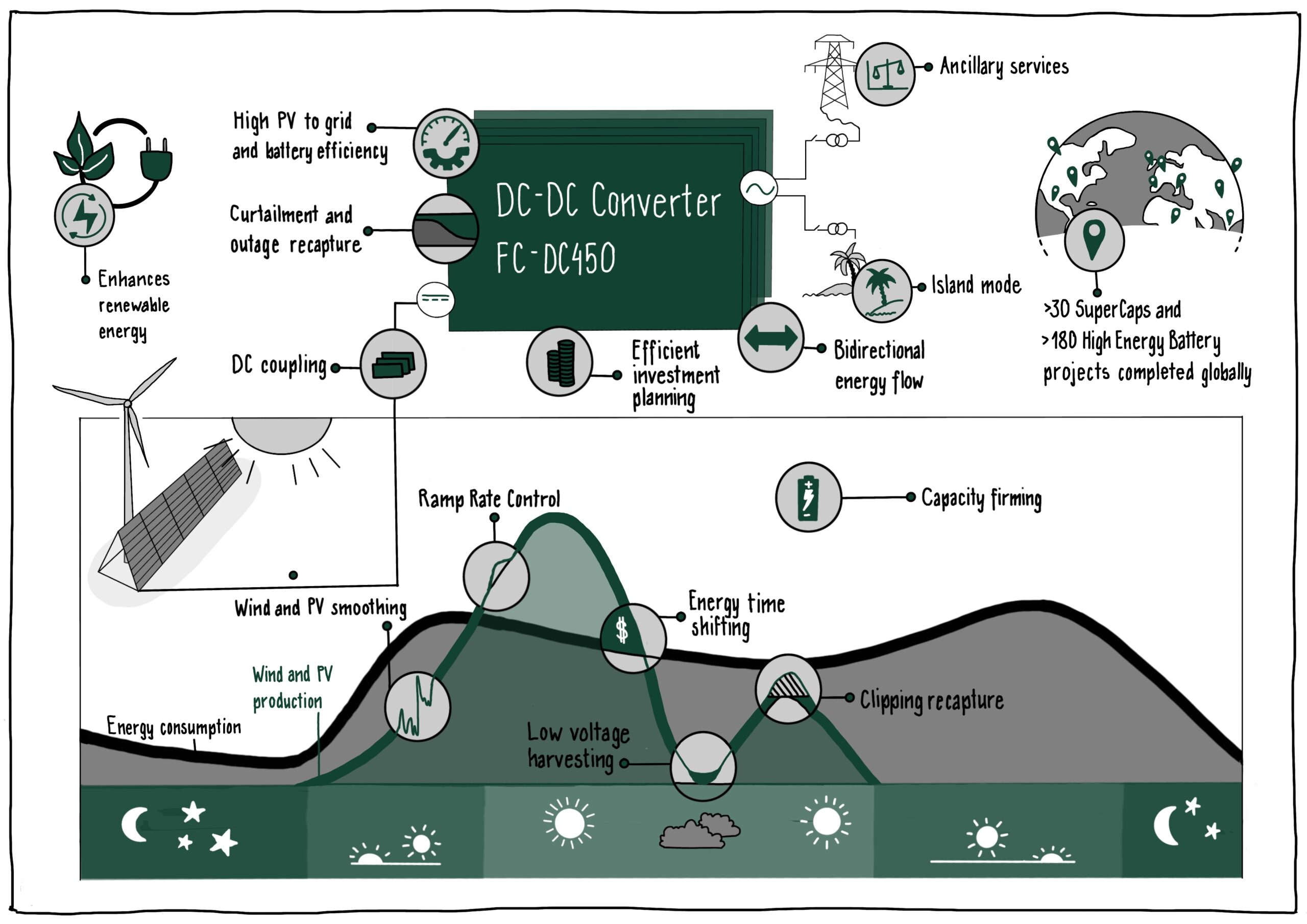Innovation FC-DC-PV
DC or AC Coupling
The main field of application for AC-coupled energy storage systems is essentially in extended network services such as:
-
Peak Load Shaving (AC-coupled)
-
Avoidance of Grid Extension (AC-coupled)
-
Reactive Power Compensation (DC- & AC-coupled)
-
Primary Reserve Control (AC-coupled)
-
Energy
Shifting (DC- & AC-coupled)
Across the globe, Indrivetec has already successfully commissioned more than 218 AC-coupled projects with its FlexConvert energy storage product family.
Indrivetec’s newest innovative development of the DC-DC-Converter FC-DC-PV allows us to leverage the benefits of DC-coupled systems as far as technically possible.
Indrivetec’s newest innovative development of the DC-DC-Converter FC-DC-PV allows us to leverage the benefits of DC-coupled systems as far as technically possible.
The DC-coupling allows for a variety of possible new applications:
-
Capacity firming
-
Energy time shifting
-
Clipping recapture
-
Curtailment and outage recapture
-
Low voltage harvesting
-
Ramp Rate Control
-
Wind and PV-Smoothing

The intermediate storage of renewable energy sources gives the system operator the chance to offer this capacity to commercial markets, without being affected by the volatility of renewable energy sources, such as wind or solar , and can be maintained at a committed level for a period of time.
Energy time shifting
The energy storage of renewable energy sources makes it possible for the system operator to take advantage of higher purchase rates in peak periods and to avoid sales when prices go down. It likewise prevents having to disconnect the facilities from the network
Clipping recapture
If the generated power of renewable energy sources exceeds the AC power of the grid inverter, the surplus energy can be stored by a DC-DC converter. The grid inverter can therefore continue to operate at full power. The stored energy can be fed in at a later point in time, if the generated power of renewable energy sources falls below the AC power of the grid inverter. This cycle allows for a maximum in generated energy.
Curtailment and outage recapture
A DC-Bus is used to couple the renewable energy sources with the energy storage system. In limited operating modes of the AC inverter due to supply management of network operators, a DC-coupled energy storage system enables the renewable power generation to continue and the power to be stored intermediately. After release from feed-in management, the stored energy can be fed in from the AC inverter. This cycle also applies during maintenance of the AC inverter.
Low voltage harvesting
Some AC inverters require a minimum threshold DC bus voltage to ensure operations. As a result of this minimum threshold voltage it can be the case , that available renewable energy sources are not fully utilised. With a DC-coupled energy storage system, however, the generated energy can be stored intermediately, until the AC inverter is available again.
Ramp Rate Control
The volatility of renewable energy sources, affected e.g. by wind or solar power, can be controlled by energy storage systems with a defined scale for performance enhancement or power reduction. This cycle enables an ongoing energy supply into the network, while preventing transient loads and overloads on the network.